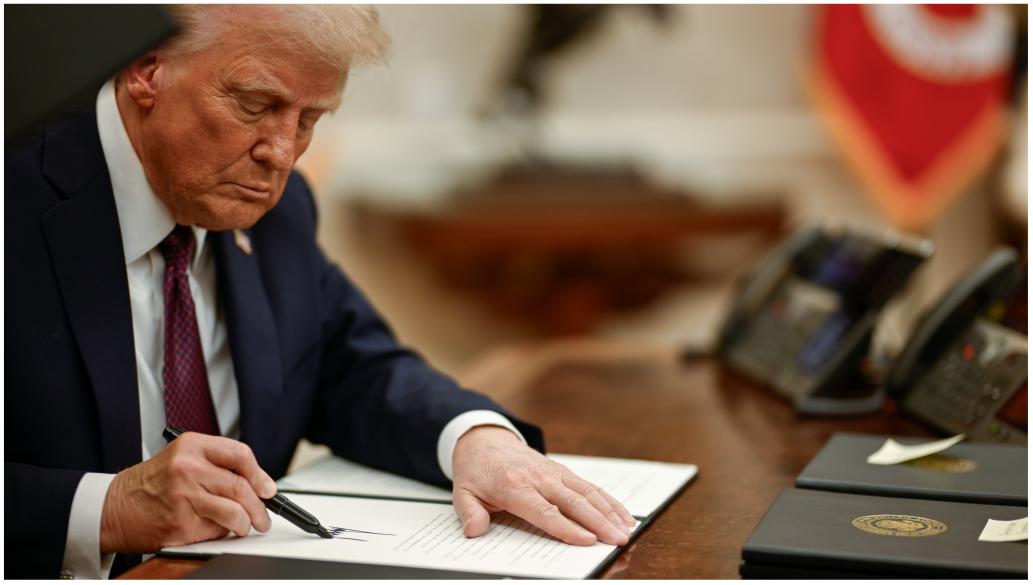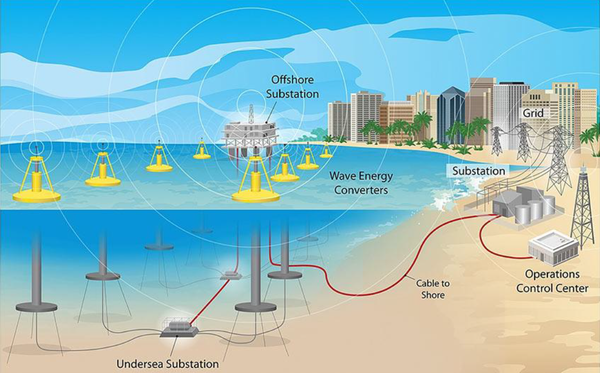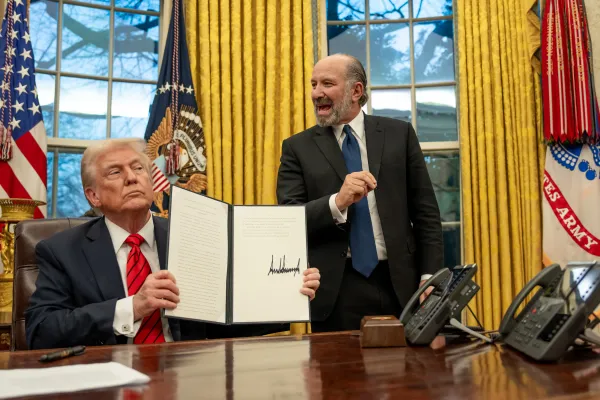Don’t let Trump’s executive orders blitz memory hole Biden’s billions for climate action
It is too early to know how much damage Donald Trump's executive actions will do to the U.S. clean energy transition, but Joe Biden's climate investments will be paying off for many years to come.

Quitting Carbon is a reader-supported publication. To support my work, please consider becoming a paid subscriber or making a one-time donation.
As expected, the first week of President Donald Trump’s second and (constitutionally mandated) final term in office was a whirlwind of activity, as the White House released a dizzying flurry of executive orders. Even for those of us who follow politics and policy for a living, it was hard to keep up with the onslaught of orders and memos.
That’s the point.
For Trump, the blizzard of paper is chaff released to demonstrate the appearance of action, and to project strength, to his supporters. No matter that many of the orders are legally dubious and will be litigated for years, while others are simply red meat to sate the president’s base.
Legal experts say it is far too early to know what long-term impact the orders will have on U.S. energy and climate policy.
“These orders repeatedly invoke emergency authorities, though it is unclear the extent to which these authorities actually confer on the President the power to dictate these actions,” Michael Gerrard, founder and faculty director of the Columbia Law School’s Sabin Center for Climate Change Law, wrote in a post last week at the Center’s blog.
“As several of the orders acknowledge, it may be necessary to undertake formal rulemakings under the Administrative Procedure Act for many of these actions. A considerable amount of litigation will undoubtedly ensue.”
“Few executive orders have any immediate impact. They’re basically nudges to various agencies to carry out his agenda. Presidents love issuing executive orders. It’s easy to do, and many people will credit the president with major accomplishment,” Daniel Farber, faculty director of the UC Berkeley School of Law’s Center for Law, Energy & the Environment, wrote on Inauguration Day at the Center’s Legal Planet blog.
He added: “Although there are a couple of exceptions, then, nearly all of Trump’s actions are really statements about policy initiatives to be undertaken later by administrative agencies. It will take a considerable amount of time for most of those initiatives to come to fruition, and they will then face judicial scrutiny.”
Biden’s billions for climate action
Trump wants us to feel overwhelmed by his manufactured chaos, and to believe that fossil fuels – not solar, wind, and other clean energy technologies – are on the ascent. But to do so would ask us to forget the previous four years. So, for the record, here’s an overview of just some of the billions of dollars in climate funding the Biden administration managed to push out the door before Trump took over.
Eighty-four percent of clean energy grants from the Inflation Reduction Act (IRA), totaling $96.7 billion, had been “‘obligated,’ meaning contracts have been signed between U.S. agencies and recipients,” Reuters’ Timothy Gardner reported on January 17.
Kristina Costa, who served as deputy assistant to Biden and director of the clean energy office at the White House, told Gardner that obligated funds include: 94% of Department of Energy funding for state energy efficiency rebate programs for home retrofits and appliances ($8.8 billion), 97% of the funding for a Department of Agriculture program to help electric co-ops to procure more clean energy ($9.45 billion), and $38 billion in funding at the Environmental Protection Agency (EPA).
Obligated funding at the EPA includes 100% of the allotment for the Greenhouse Gas Reduction Fund, a $27 billion program often referred to as a U.S. “green bank.”
Additional obligated funding from either the IRA or Bipartisan Infrastructure Law at the EPA includes $5 billion sent to nearly 1,300 school districts to fund 8,700 new (mostly battery electric) school buses, nearly all the $5 billion allotted to the Climate Pollution Reduction Grant Program for states, tribes, and territories, and more than $2.5 billion for the Clean Ports Program, which I reported on earlier this month.
At the Department of Energy, Jigar Shah revived the Loan Programs Office (LPO), turning the government lender, moribund during Trump’s first term, into a juggernaut that committed funding to new manufacturing facilities and clean energy projects across the country.
“These past four years have been the most productive in LPO’s history,” Shah, who directed the office from March 2021 to January 2025, wrote in a post published at the LPO website just before Trump took office.
“Under the Biden-Harris Administration, the Office has announced 53 deals totaling approximately $107.57 billion in committed project investment – approximately $46.95 billion for 28 active conditional commitments and approximately $60.62 billion for 25 closed loans and loan guarantees.”
Shah made it clear that LPO’s work is not done – should the Trump administration choose to keep it going.
“As of January 17, there are over 160 applicants seeking over $200B in loan proceeds to develop their projects,” he wrote. “These projects are proposed by the best and brightest of U.S. entrepreneurs and innovators – and they are depending on LPO’s continued support and vigilance.”
Trump’s executive orders blitz aims to will away this progress.
“One thing that no one can deny is that Trump is brilliant at political theater. People overlook the importance of that at their peril,” wrote UC Berkeley Law’s Farber. “But theater isn’t reality, and it remains to be seen how many of the grand gestures Trump made today will eventuate in significant policy changes.”
Even the most worrisome of the Trump executive actions for the future of the energy transition, the presidential memorandum halting federal leasing and permitting for offshore and onshore wind, will likely only succeed in creating delay and uncertainty.
“The inconsistency with other executive actions designed to boost energy production will result in complete uncertainty for projects at any stage of the development process. It seems inevitable that some directives in the Memorandum will be challenged in federal court,” wrote Laura Smith Morton, a partner at Perkins Coie, in a post last week at the law firm’s blog.
Meanwhile, the tens of billions of dollars the Biden administration already handed out under the IRA to local and state green banks will be funding projects across the U.S. for many years to come.
Indeed, as the EPA wrote in a January 13 press release: “Awardees are now implementing their projects to reduce pollution and mobilize public and private capital for clean energy projects around the country.”
Climate United, a non-profit consortium staked with $7 billion in federal green bank funding, backed the first such project funded under the program last year, 66 megawatts of solar to be installed at 16 sites across Arkansas, as Jeff St. John reported for Canary Media in October 2024.
The looming “impoundment crisis”
The Trump administration is determined to halt this progress. Last night, the acting director of the White House Office of Management and Budget (OMB) released a memo initiating a freeze on nearly all federal government grants and loans. A federal judge temporarily paused the OMB order on January 28 and OMB rescinded the memo the next day*.
We are careening towards an “impoundment crisis” in which the U.S. Supreme Court will ultimately decide whether Donald Trump – or any future president – can simply refuse to spend money appropriated by Congress.
“In essence, the Trump administration is claiming the unilateral power to at least temporarily ‘impound’ tens of billions of dollars of appropriated funds – in direct conflict with Congress’s constitutional power of the purse, and in even more flagrant violation of the Impoundment Control Act of 1974,” Steve Vladeck, a professor of law at the Georgetown University Law Center, wrote yesterday at his One First newsletter.
With so much uncertainty around federal spending at the moment, it is even more important in hindsight that the Biden administration managed to get so much money out the door so quickly. Tens of billions of dollars are already in the hands of companies with closed loan commitments from the Department of Energy or the non-profits investing in projects with the EPA’s green bank funding.
“On the unspent funds, we are at a place where we’re north of $9 out of every $10 of grant funding and other similar dollars that have already hit the economic bloodstream across the country,” Biden’s national climate adviser Ali Zaidi told The Verge earlier this month.
Donald Trump can rescind Joe Biden’s executive orders with orders of his own, and he will try to roll back Biden’s regulations limiting climate pollution in the coming months, but the billions from Biden’s signature climate laws already invested in communities across the country will pay dividends in emissions reductions during Trump’s final term and for decades to come.
*This column has been updated to note that on January 29, 2025, OMB rescinded the memo initiating a federal spending freeze.




